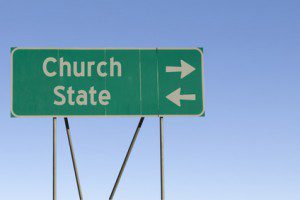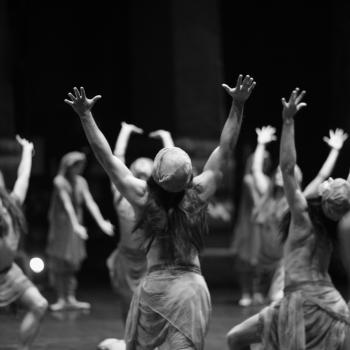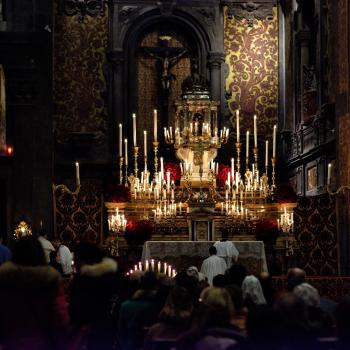Typically, when people think of “religion and politics,” they think of social issues such as abortion, contraceptives, and gay marriage. While that’s not a bad place to start, it does in fact start at the group level rather than focusing on individuals. Wanting instead to see how religion can affect political beliefs at the individual level, Ryan LaMothe (St. Meinrad School of Theology) found five ways in which this can happen.
More specifically, LaMothe investigates how religion can lead to political conversion and vice-versa on the individual level. As much as secular governments strive for a clean break between religion and politics, LaMothe argues that the two do in reality mix, and they mix in complex ways. On the political end, religion can strongly influence which party a person votes for, and even campaigns for, and on the religious end, political views can play a major role in religious conversion – in other words, people not uncommonly change religions or denominations in order to find a fit for their political beliefs.
Adding further complications, a person can identify as atheist or agnostic and still have “religious experiences” mediated by their religious community. For example, LaMothe argues that an atheist Jew who faithfully attended synagogue and lived like a practicing Jew would, to a large extent, have the religious experiences of an observant Jew. Living within a religious community shapes the people in that community and how they see the world, regardless of whether they cognitively reject swathes of their community’s beliefs. On the other side, a person can have no religious community whatsoever and yet have religious experiences and have their religion influence their politics. Both of these scenarios greatly complicate the “all people of religious group x vote y” stereotype and shows the need for analysis at the individual level.
LaMothe proposes five types of religious-political experience at the individual level.
- In the first type, religion has a “lingering influence” on a person’s political beliefs. This means that people early on in their life identified with a religion but later on converted out of it. Because they were part of a particular religion so early on in life, that religion’s symbols and narratives have been engrained in their mindset, even though they have since abandoned the tradition. In fact, political ideology may even replace a person’s religion. For example, a religious goal of loving one’s neighbor may translate into secular political activism such as fighting for the poor, and a political activist could dedicate his life to the poor in the same way a person might dedicate himself to a religion.
- The second type reverses the first: a person starts with no religious affiliation and converts to a religion, with the net effect that his political beliefs shift. This includes people raised in a nominally religious family—a family that goes to church on the major religious holidays, but for the most part lives a secular life. Once a child from such a family converts to a religion, or participates in his family’s religion in a dedicated way, his political sensibilities could readily change, due to the influence of the religious community and religious beliefs.
- LaMothe’s third type involves no religious conversion, but simply consists of a children keeping their family’s religious lifestyle but applying it to the political sphere in a way foreign to their family. To put it more succinctly, religion fuels political activism. A current example of this, according to LaMothe, is liberation theology in South America. Liberation theology is a political movement driven by certain Roman Catholic clergy to improve the conditions of the poor in South America. These clergy say that their Catholicism commits them to aiding the poor, and thus their religion leads them to political activism.
- The fourth type places the primacy on the political rather than the religious experience of an individual. While an individual may hold to a religion ostensibly, the degree to which the individual is really engaged with religion is unclear. Although such a person may derive some inspiration from religion, what ultimately drives and motivates this person are political stances. Religion takes a backseat to politics. Notice how in the first type, the individual consciously rejected religion, yet religion had a lingering effect on political views, while in this fourth type the individual claims to belong to a religion, but religion has no detectable effect.
- The fifth and final type places absolute primacy on the religious over the political, because in this type religious experience leads people to reject the political realm altogether. Since the focus here is on individuals, religious groups like the Amish are excluded, because it is a religious community centered around sequestering themselves from the outside. Rather, in the fifth type, individuals have a religious encounter that convinces them to estrange themselves as much as possible from the political happenings around them. Religion here excludes political involvement.
These five types make clear that religion has no clear or necessary connection with political beliefs or activism. Sometimes religion leads to more political involvement, sometimes none at all, and still other times the political involvement affects religion. If anything, the mix of religion and politics should be loathed not because one corrupts the other, but because the result is so unpredictable.
For more, see “Varieties of Political-religious Experience” in Pastoral Psychology.












